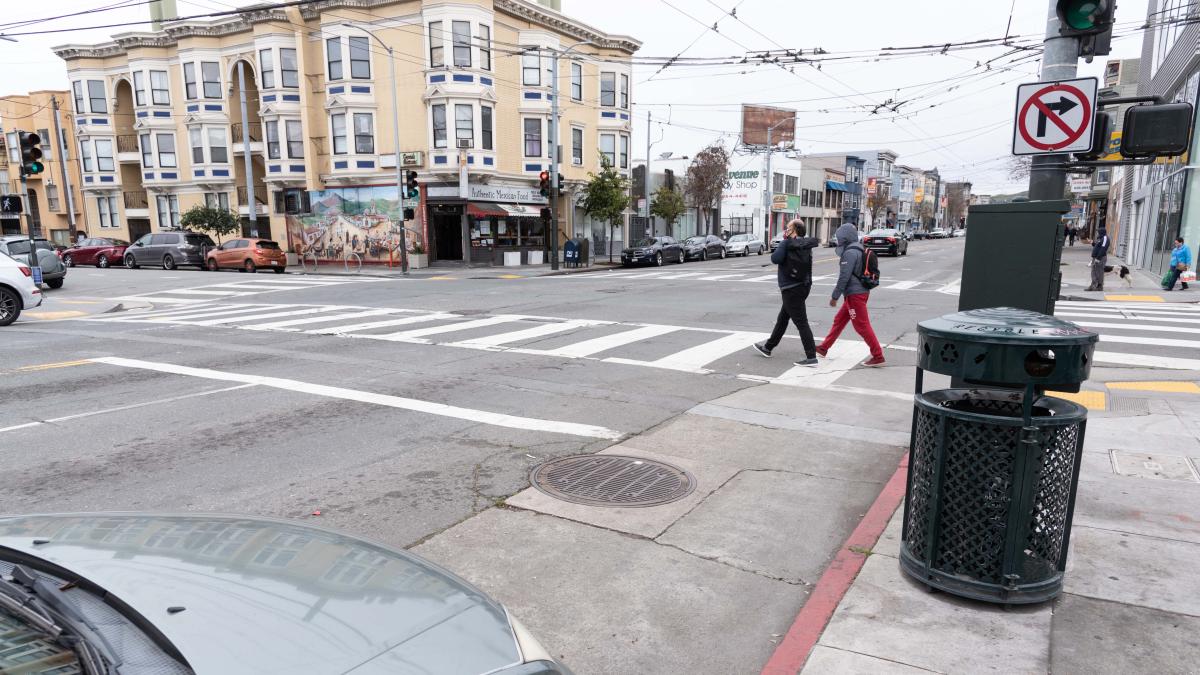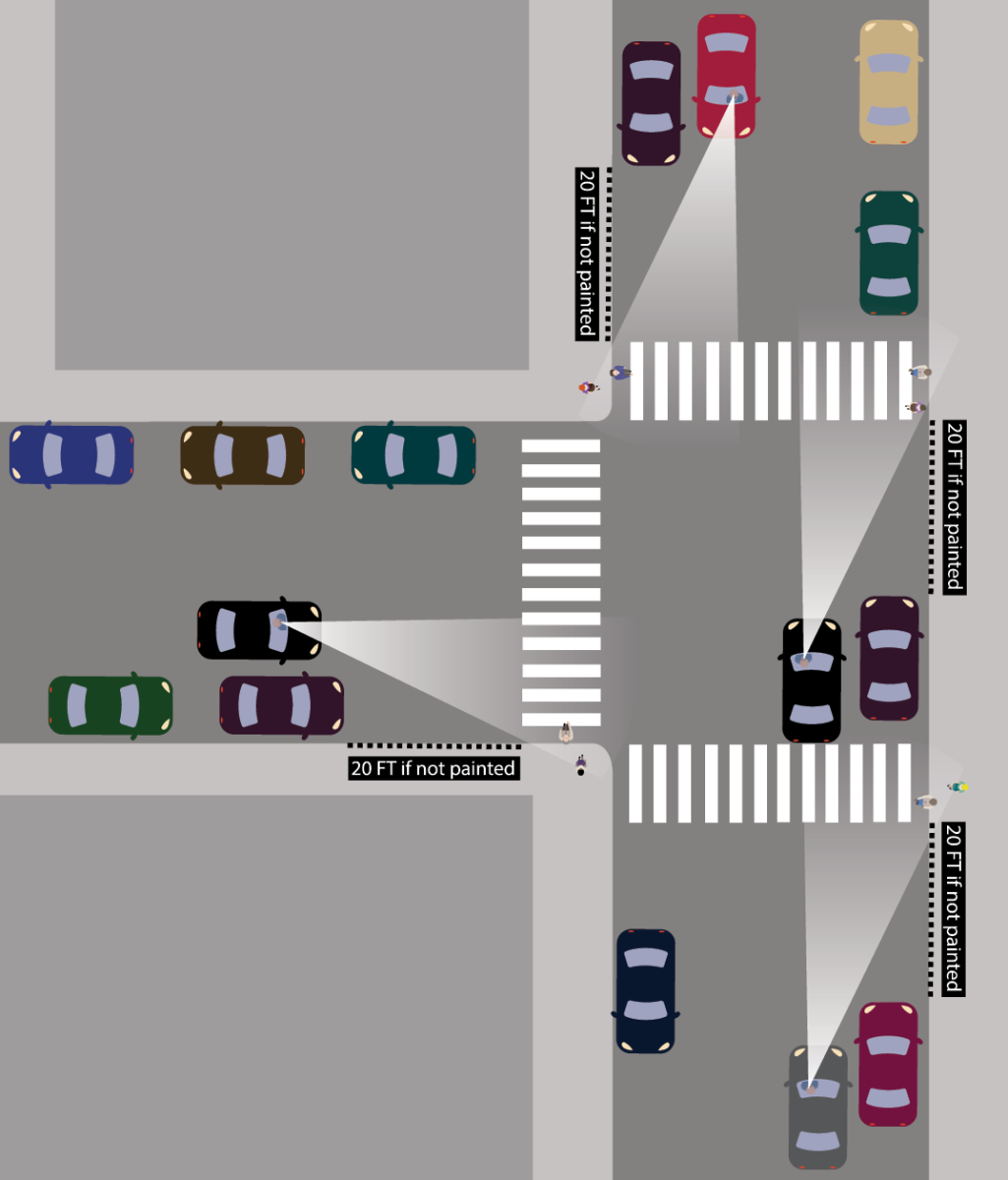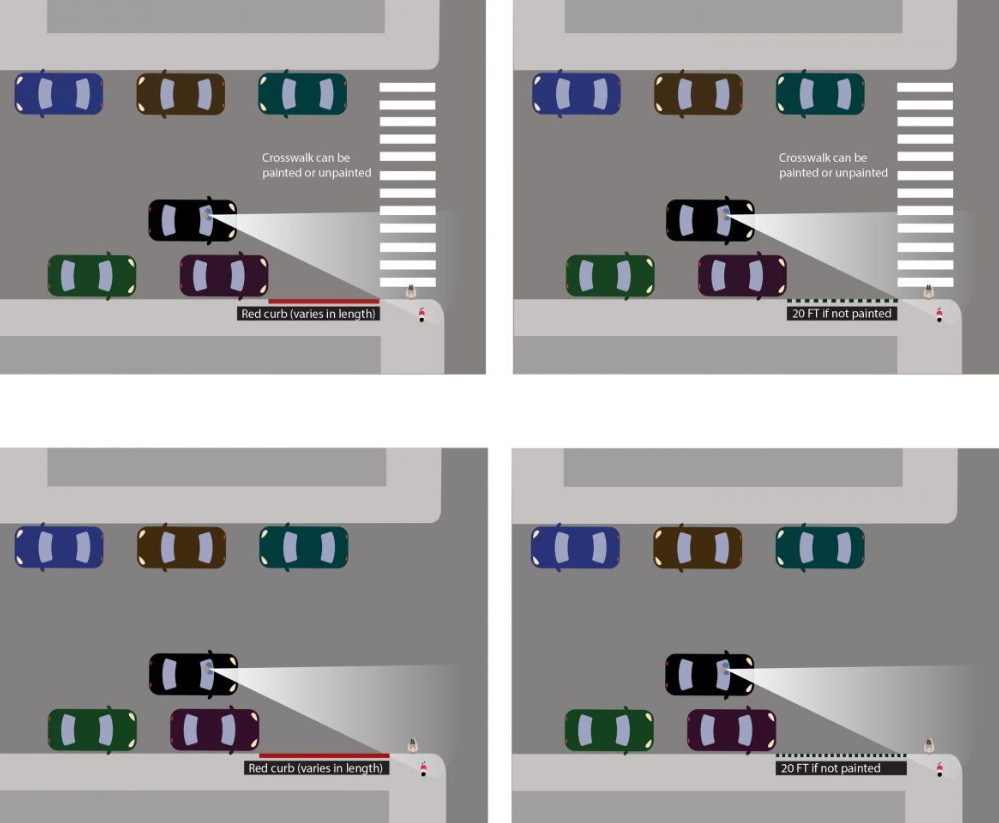
What is daylighting?
“Daylighting” improves safety at intersections by creating a better line of sight between people driving and people in crosswalks. By keeping the area next to crosswalks clear of parked vehicle obstructions, people can see each other better.
Implementation
SFMTA is daylighting all intersections in the city by the end of 2026 and it is doing it in 3 phases:
- Daylighting the entire High Injury Network – 925 intersections on the High Injury Network remained to be daylighted. This work has been ongoing for several years and will be finished in Summer 2025.
- Around Schools – Students and families are among the most vulnerable road users. By the end of 2025, all intersections in a 600’ radius around schools will be day lit.
- Citywide – After schools are completed, crews will begin daylighting all remaining crosswalks across the city by the end of 2026.


Background
Daylighting has existed around the country for decades, with the state of California being one of the only states not daylighting intersections. However, in 2023, California formally adopted a statewide Daylighting law, AB 413. SFMTA is coming into compliance with the state law in three phases.

California’s New Daylighting Law (AB 413)
Starting on January 1, 2025, it is illegal in California to park within 20 feet of the approach of any marked or unmarked crosswalk, even if the approach does not have any red curbs painted. California Assembly Bill 413 was signed into law in October 2023 and replicates the law in other states that similarly require people not to park right next to any crosswalk. Specifically, the law:
- Creates a new section of the Vehicle Code, CVC 22500(n), which prohibits the stopping, standing, or parking of a vehicle within 20 feet of the vehicle approach side of any unmarked or marked crosswalk or 15 feet of any crosswalk with a curb extension anywhere in California.
- On a two-way street, only the space on the right-side approaching a crosswalk as one is driving is affected. However, on a one-way street, both the left and the right curb areas 20 feet from the crosswalk are no parking zones.
- Allows local jurisdictions to paint zones that are longer or shorter than 20 feet. When you see a red curb or parking prohibition sign next to a crosswalk just follow that distance. If there is no paint or signs, the 20 feet distance applies. 20 feet is about the length of a standard parking space or one large car-length.
Historical Context for California’s New Parking Rules Near Crosswalks
Until AB 413 was signed into law in October 2023, California was one of the few states that did not have a rule restricting parking near crosswalks. Over 40 states currently have laws that require vehicles to keep a distance of generally 20 feet from crosswalks, according to research from the California Research Bureau of the California State Library. These rules often date back to the dawn of the automobile era when codes were first established to regulate the operation of motor vehicles.
The United States Uniform Vehicle Code (UVC) adopted in the 1920’s originally had an Article 26 that prohibited parking “within twenty-five feet from the intersection of curb lines or if none then fifteen feet of the intersection of property lines at an intersection of highways.” The UVC was later updated and in its most recent Millenium version has Section 11-1003(a)(2)(c) that prohibits parking “within 20 feet of a crosswalk at an intersection.” Since most states based their own first Vehicle Codes on the UVC, these rules have carried forward over time across the United States.
The federal government itself assumes UVC rules in its guidance on how cities should arrange on-street parking spaces. Here’s a video from Salt Lake City, for example, explaining driving rules in Utah that are similar to those that now apply in California, except in Salt Lake City one also has to keep clear of the departure or far-side crosswalk. California, however, did not base its first California Vehicle Code on the UVC, thus never had nor later added a prohibition prohibiting parking near intersections or crosswalks. Therefore, while the daylighting concept is new to many of us in California, the concept that it is safer to keep parked vehicles away from intersections is as old as the automobile itself.
Across the world, many other countries also have rules that require drivers not to park within a specified distance of marked or unmarked crosswalks. The 1968 Vienna Convention on Road Traffic (which sets the driving rules for many countries, particularly in Europe) states in Article 23 that parking should be prohibited “on approaches to level-crossings, to intersections, and to bus, trolleybus or rail-vehicle stops within the distances prescribed by domestic legislation.” The distance varies, but in many countries has been set at 5 meters or about 16 feet. When visiting other countries and states, you may now find that they too have had AB 413-type parking rules. So now, whether you are traveling in or out of California, always exercise care when parking near crosswalks and intersections.
SFMTA’s Commitment to Daylighting
In May 2019, the San Francisco Board of Supervisors adopted a resolution urging the SFMTA to create a daylighting plan and to systematically implement daylighting on the High Injury Network. SFMTA is committed to daylighting the entire High Injury Network—the 12% of city streets that account for 68% of severe and fatal traffic crashes. This effort is part of our overall Vision Zero commitment to eliminate traffic fatalities and reduce severe injuries on our city streets. In addition, many other intersections in the city have had red zones added to them over the years to improve safety as well.